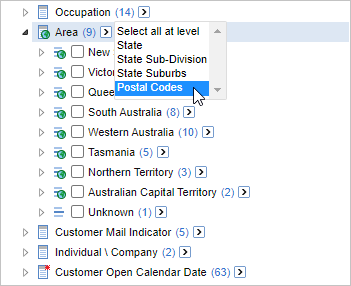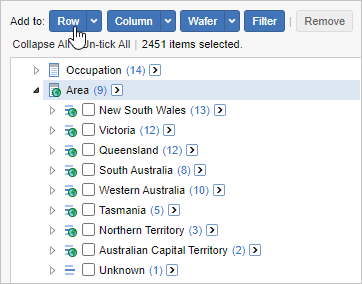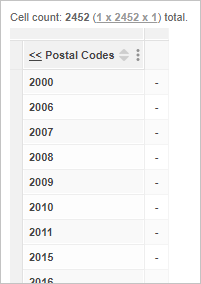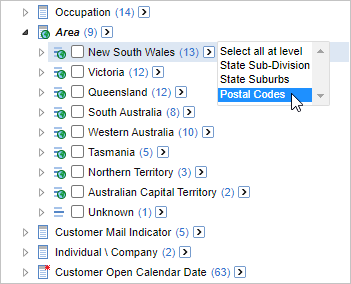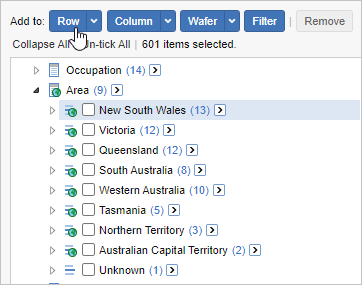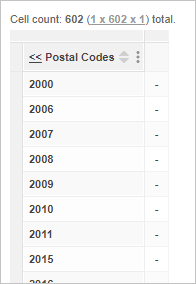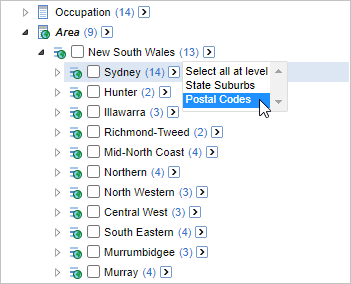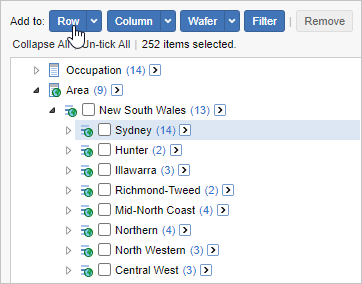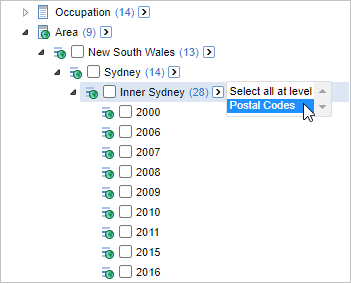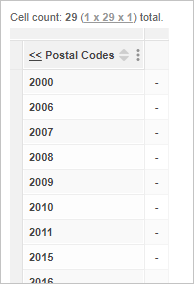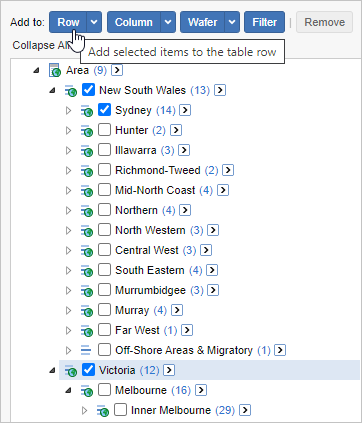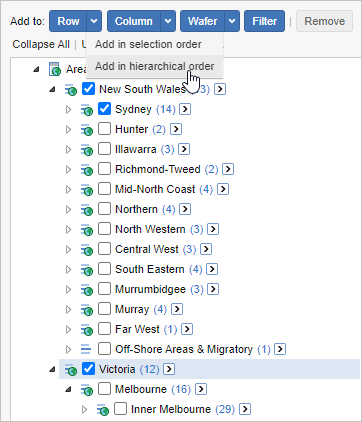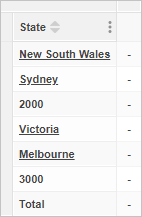Working With Hierarchies
You may have fields in your data that are represented as hierarchies.
For example, in the sample Retail Banking dataset, the Area field contains a hierarchy of several levels, with states at the top level, down to postal codes at the lowest level:
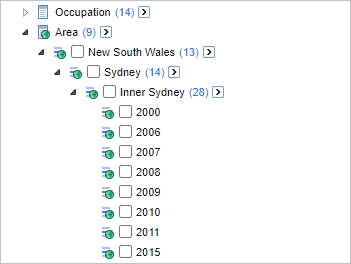
Using Select All At Level with Hierarchies
You can use the Select all at level option with hierarchies to quickly select all values at a particular level inside a hierarchical field.

The following examples demonstrate selections for each level of the hierarchy subsumed under the Area field. (Note the way the number of items selected from the schema tree and the consequent cell count in the table is reduced as postal codes are selected from further down the hierarchy in each successive example.)
|
|
|
|
|
|
|
|
|
|
|
|
|
|
|
|
|
|
|
|
|
|
|
|
|
|
|
|
When using the Select all at level drop-down, you are recommended to always use the Add to Row, Column or Wafer buttons located above the schema tree to add the selected items to the table. Attempting to drag and drop may result in unintended results (such as both the children and its parent item being added to the table together).
Navigating the Hierarchy within a Table
When your table includes a hierarchical field, you can also navigate the hierarchy within the table itself.
Click any of the underlined field items to drill down through the hierarchy. For example:
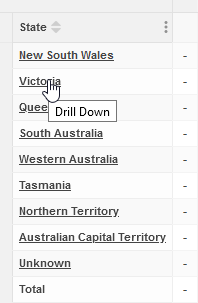
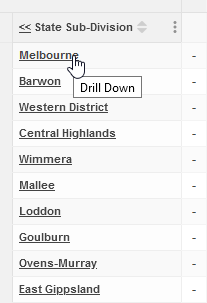
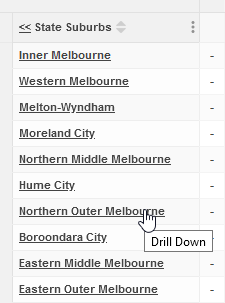
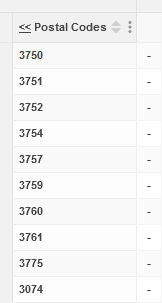
Click << next to the row or column heading to navigate up the hierarchy. For example:
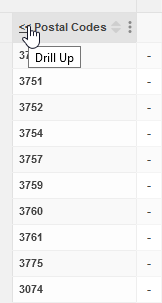
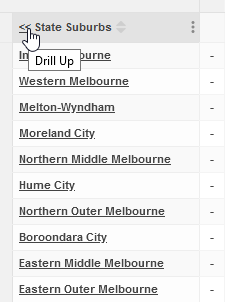
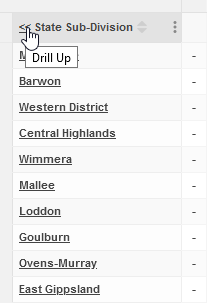
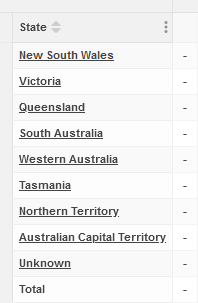
Using Items from Different Levels of a Hierarchy in the Table
By default, SuperWEB2 allows you to add items from different levels in a hierarchy to a table at the same time.
For example, with the Retail Banking Area field, you can add a mix of cities and states to the table:
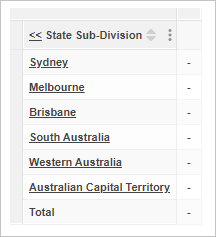
Add Items in Selection Order or Hierarchical Order
By default, when you select some items in the field list and click one of the Add to buttons, SuperWEB2 will add those items in the order you selected them.
For example, if you select Sydney, then New South Wales, then Victoria, and then click Row, SuperWEB2 will add them in that order:
|
|
|
Alternatively, use the Add in hierarchical order option. You can select this option by using the drop-down arrow next to the button.
|
|
|
When you select some items and click Add in hierarchical order, then those items will be added according to their relative positions in the hierarchy, regardless of the order they were selected.
For example, for the Area field in the Retail Banking sample dataset:
| If you select... (in any order) | The table will be: |
|---|---|
|
|
This feature uses the following rules when determining the sort order:
- Only levels in the hierarchy that are included in the selection are considered when sorting.
- If you select items from multiple fields or summation options then they will be added in the order those fields appear in the list.
- Custom data items (even those from the same underlying field as items in a selection) will always be placed at the start.
- Summation options are sorted by weight and then statistical function.
- User defined fields are sorted as their own separate field.

